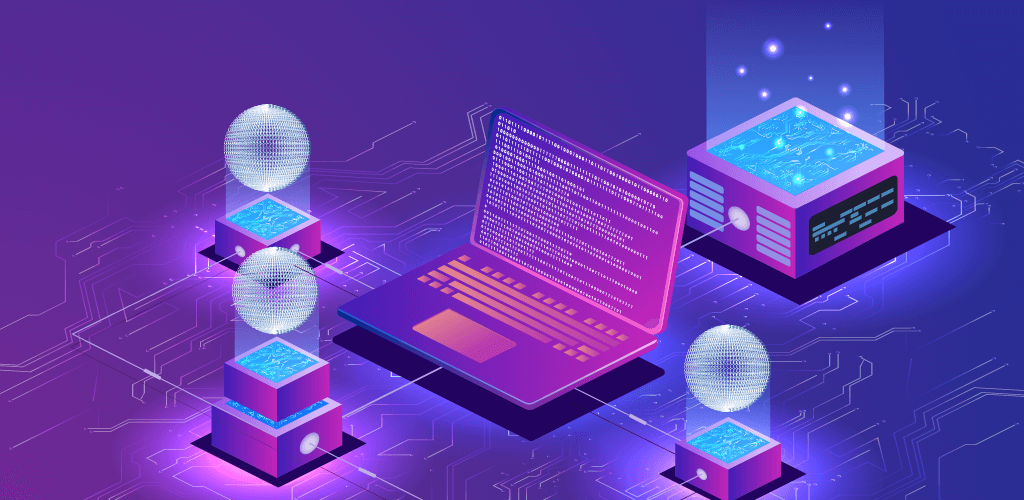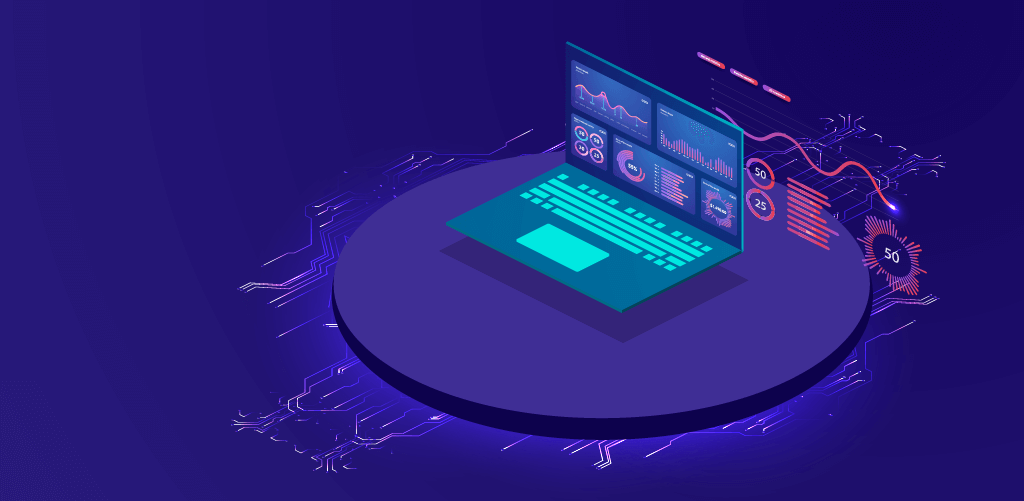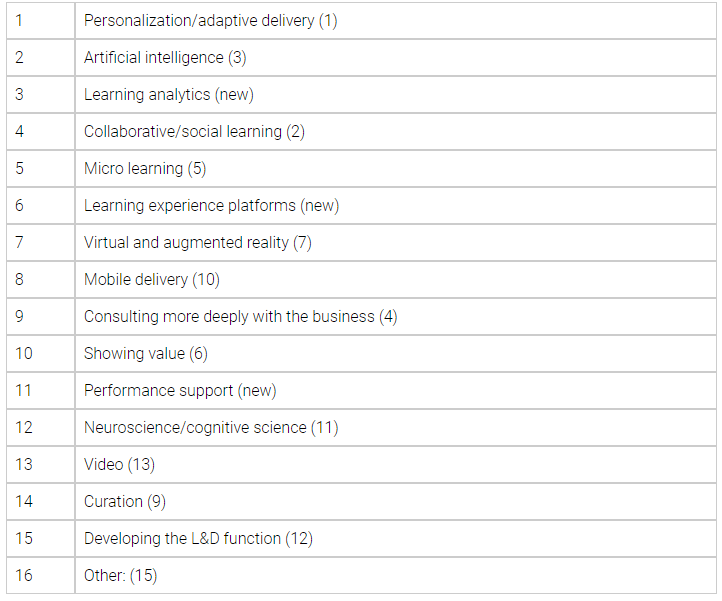Learning trends: from survey to reality
March 6, 2019
Every year the effervescent Donald H Taylor publishes a survey of learning trends in the run-up to Learning Technologies in February.
The survey is completed by 2,000+ learning professionals and provides a good summary of the pulse of the market. We watch the results with interest and compare this to what we’re seeing with our own customers and people we work with.
AI is here
4 of the top 5 entries on the list are basically about Artificial Intelligence. It’s not a surprise… AI is everywhere and we’re becoming increasingly used to AI driven services in our private lives. So why not in learning? Personalisation of the learning journey is the most obvious application of AI and we’re seeing some strides here as the underlying technology becomes smarter and more accessible. It feels like we’re right at the start of the personalisation journey which, by its nature, becomes better and richer as we get more data and more users interacting with algorithms.
At Learning Pool we’re pretty advanced in developing recommendation technology that will drop into Learning Pool Platform in the next few weeks. It’s been an interesting journey with plenty of pitfalls. Our biggest learn is that it’s only when you understand the specific business challenge the learning is capable of solving, that the engine becomes useful.

Data is key… but what are we doing with it?
Learning Analytics (basically data…) comes in as a brand new entry at no 3. That’s quite a thing but reflects completely the trends we’re seeing among our customer base. It’s fair to say that as an industry we’ve been poor around using data to make decisions. The parallel with the marketing world is perhaps overused but there’s certainly some truth in it. As an industry, Learning Tech has been constrained by SCORM for years. Now that xAPI is getting more traction we’re seeing customers quickly realise that data generated in learning and compared with data being generated by the business is a great way to measure impact and identify areas for improvement. It’s taken a while, but we seem to have gotten to an exciting place.
No room for chatbots
We were surprised that chatbots didn’t make the list. We’re certainly seeing developing interest in this area and our view is that implementing chatbot technology is the surest way of delivering the promise that Josh Bersin describes as learning in the flow of work (also not on the list).
In fairness, it’s probably that these things are ‘buried’ in other topics that are covered – LXPs, AI all point to the use of learning assistants of some kind and chatbots like Otto are the obvious way to do this. We’re seeing interesting outcomes from the data collected by deploying chatbots. Rather than focusing on what people do while online, chatbots can capture the search results that don’t produce useful responses for users – aggregated at scale this provides hugely valuable insights to L&D on what their users ‘really’ want.

Gamification slips away
Having been on the list for the last few years, gamification is now gone. We’re not sure that means it’s actually disappeared though, instead, we think the crazy ‘learn the values by playing flappy birds’ or ‘measure the distance by comparing the size of the friendly shark’ have been consigned to room 101. Gamification techniques like leaderboards and levels have their place and are being used successfully by the Learning Pool customers to drive usage, encourage competition among departments and improve engagement. Combined with richer datasets, this approach could become more useful in the future, not less.
Learning Experience Platforms are the new kid on the block
Learning Experience Platforms (LXPs or LEPs) come straight in at no 6 on the list. Anyone who came to Learning Technologies a few weeks ago won’t be surprised – LXPs seemed like the coolest thing on the block.
We think this is a great growth area and we’ve invested heavily in our own LXP – Learning Pool Platform, primarily so we can deliver a true ‘learning in the workflow’ option for customers and also to benefit from the rich data afforded by this technology. But the risk is that LXPs become the LMS with lipstick on which would be a real shame. LXPs can and should be used for a different purpose – creating new levels of engagement with learning, delivering answers to specific business problems and making learning available in the user’s workflow.
Our view is that in the future, businesses will have an ecosystem that includes an LXP and an LMS to create a powerful L&D offer for different business interests. But that’ll only work if the data underneath is common and accessible to more than one system.
Donald will be speaking at Learning Pool Live on 17 October and we’re sure this topic will come up. If you’re interested in finding out more, book your early bird place today!
Got a learning problem to solve?
Get in touch to discover how we can help


